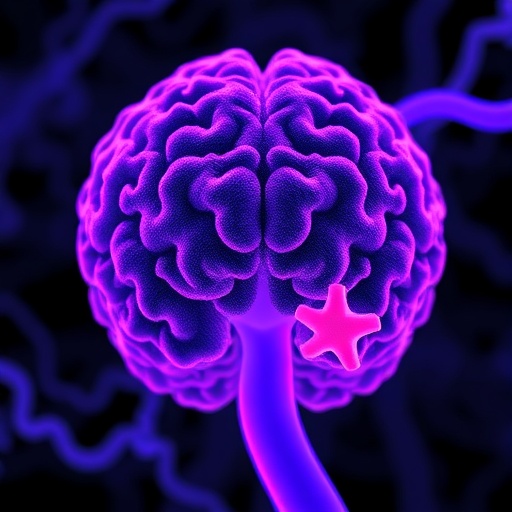Researchers at the University of California San Diego’s Sanford Stem Cell Institute have made a groundbreaking advancement in neuroscience by leveraging the unique properties of graphene to influence the maturation and stimulation of human brain organoids. This innovative method, termed Graphene-Mediated Optical Stimulation (GraMOS), is detailed in a recent study published in the prestigious journal Nature Communications. This research not only accelerates the development of these brain-like structures but presents an exciting new avenue for studying neurological diseases such as Alzheimer’s, thereby transforming the landscape of brain research.
For many years, brain organoids—three-dimensional structures grown from stem cells—have been invaluable for studying the human brain and various neurological disorders. However, their slow maturation has been a persistent challenge, particularly for research focused on conditions that evolve over extended periods. Existing stimulation methods often involved invasive techniques or required genetic modifications, which could disrupt normal organoid development. The advent of GraMOS represents a non-destructive method that avoids these pitfalls by utilizing graphene’s optoelectronic properties to convert light into electrical signals, promoting neural connectivity without altering the genetic integrity of the cells.
In the study, the researchers demonstrated that GraMOS enables brain organoids to mature substantially faster. By using gentle electrical cues generated through the interaction of light with graphene, the organoids exhibited accelerated growth in terms of neuronal connections and overall structural organization. This sophisticated technique effectively mimics the natural stimuli that living brains experience, fostering an environment conducive to rapid neural development. For conditions like Alzheimer’s disease, where understanding progressive changes in the brain is crucial, this method offers a significant advantage.
Dr. Alysson Muotri, a leading figure in this research and director of the Integrated Space Stem Cell Orbital Research Center at UC San Diego, emphasizes the transformative potential of GraMOS. He articulates that this approach not only expedites the maturation of brain organoids but opens exciting new possibilities for studying complex neurological diseases without genetic alteration. As researchers look to bridge the gap between living neural tissues and technological applications, GraMOS positions itself as a pivotal player in the field of neuroscience.
The implications of accurate brain organoid modeling cannot be overstated. Traditional models often lack the physiological relevance necessary to mirror human disease accurately. By providing a more effective method to stimulate these organoids, researchers can investigate the early stages of diseases like Alzheimer’s, uncovering functional differences in neural connectivity and excitability that were previously inaccessible. Importantly, the biocompatibility of graphene ensures that neural cells remain unharmed during stimulation, a critical factor in the integrity of the research.
Another striking aspect of the GraMOS technology is its potential application in robotics. The research team successfully demonstrated a feedback loop where graphene-stimulated organoids interfaced with a robotic system. Upon detecting an obstacle, the robot relayed a signal to the organoid, which then generated a neural response that dictated the robot’s movement, completing this interactive process in under 50 milliseconds. This kind of neuro-biohybrid system bridge significantly enhances our understanding of how living neural tissue could contribute to robotic capabilities.
The capacity for brain organoids to adapt and form new connections in response to environmental stimuli opens doors for applications beyond just disease modeling. As AI continues to evolve, integrating living neural networks with robotic systems could revolutionize how we approach problem-solving, offering systems that learn and adapt more independently. This intermingling of biology and technology reflects a vision of future where living cells contribute to cognitive processes in machines, paving the way for advanced prosthetics and adaptive interfaces.
This transformative approach allows for the exploration of existing brain circuitry and its modifications in response to disease. The flexibility that GraMOS offers researchers will likely enhance the accuracy of drug testing protocols and shorten timelines, which is critical in the chase for effective treatments. By accelerating neural maturation, scientists can delve into the mechanics of neurodegenerative diseases sooner and in a context that more closely mirrors human biology, facilitating the development of novel therapeutic strategies.
The researchers involved laud the collaborative spirit that underpins this study. The collective expertise from different domains—biology, engineering, and materials science—culminates in a pioneering research effort that speaks to the future possibilities of both neuroscience and engineering. The integration of cutting-edge technologies like graphene in biological research underscores a broader trend towards interdisciplinary research, where innovations can leap across traditional boundaries to solve complex scientific challenges.
In conclusion, the application of GraMOS technology exemplifies a formidable leap forward in the study of the human brain. By enabling more rapid and effective neuronal maturation, researchers are better positioned to explore the intricacies of neurological conditions and their progression. This research not only contributes to our understanding of human brain function but also hints at broader applications that may redefine the synergy between neural biology and technology, thereby holding the promise for unprecedented advancements in both fields.
As the implications of this breakthrough continue to unfold, one thing remains clear: the fusion of graphene technology with brain organoids represents a remarkable step toward accelerating research that could fundamentally transform our approach to understanding and treating neurological disorders, all the while placing an emphasis on the intricate relationship between biology and technology.
Subject of Research: Graphene-Mediated Optical Stimulation of Human Brain Organoids
Article Title: A Game-Changer for Brain Research: Accelerating Maturation of Human Brain Organoids
News Publication Date: [Insert Publication Date Here]
Web References: [Insert Web Links Here]
References: [Insert Bibliography Here]
Image Credits: Credit: Wirla Pontes




